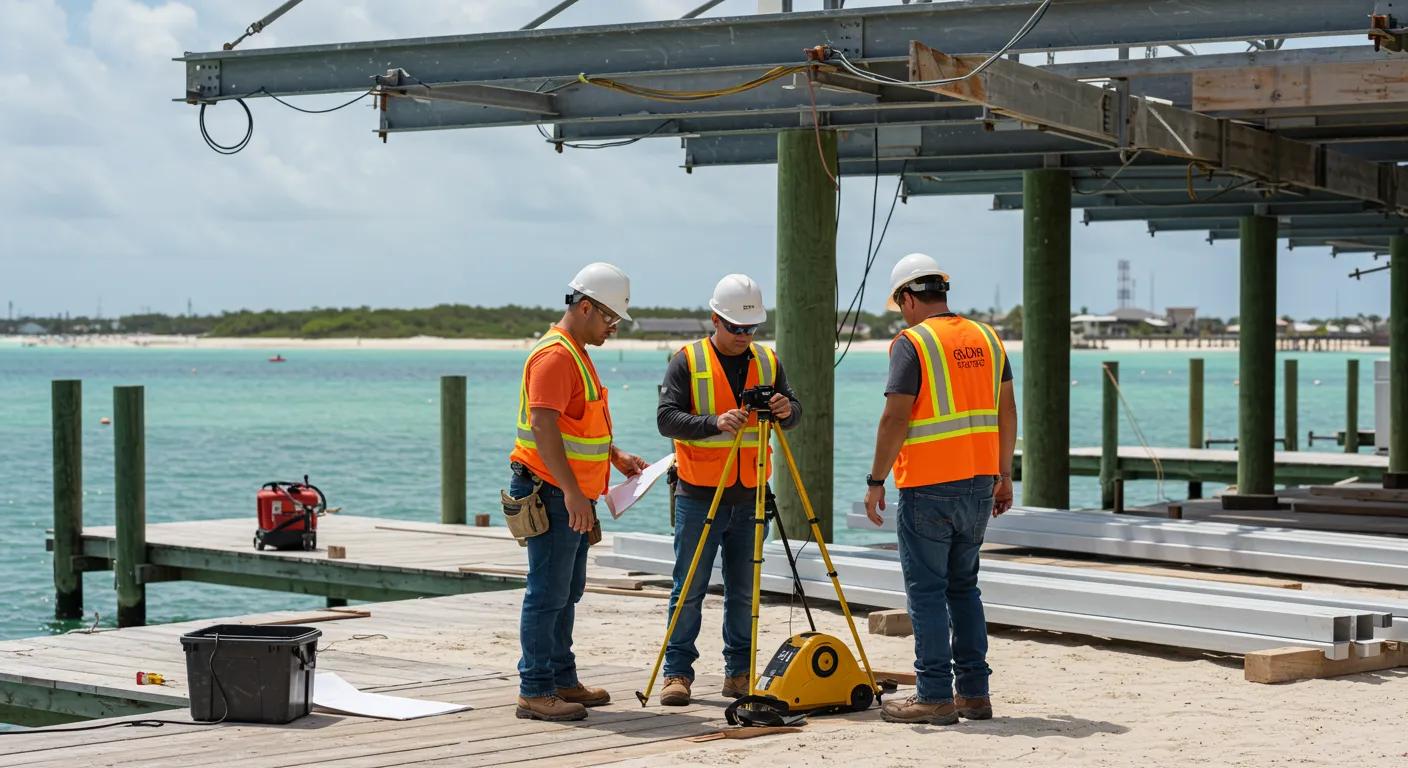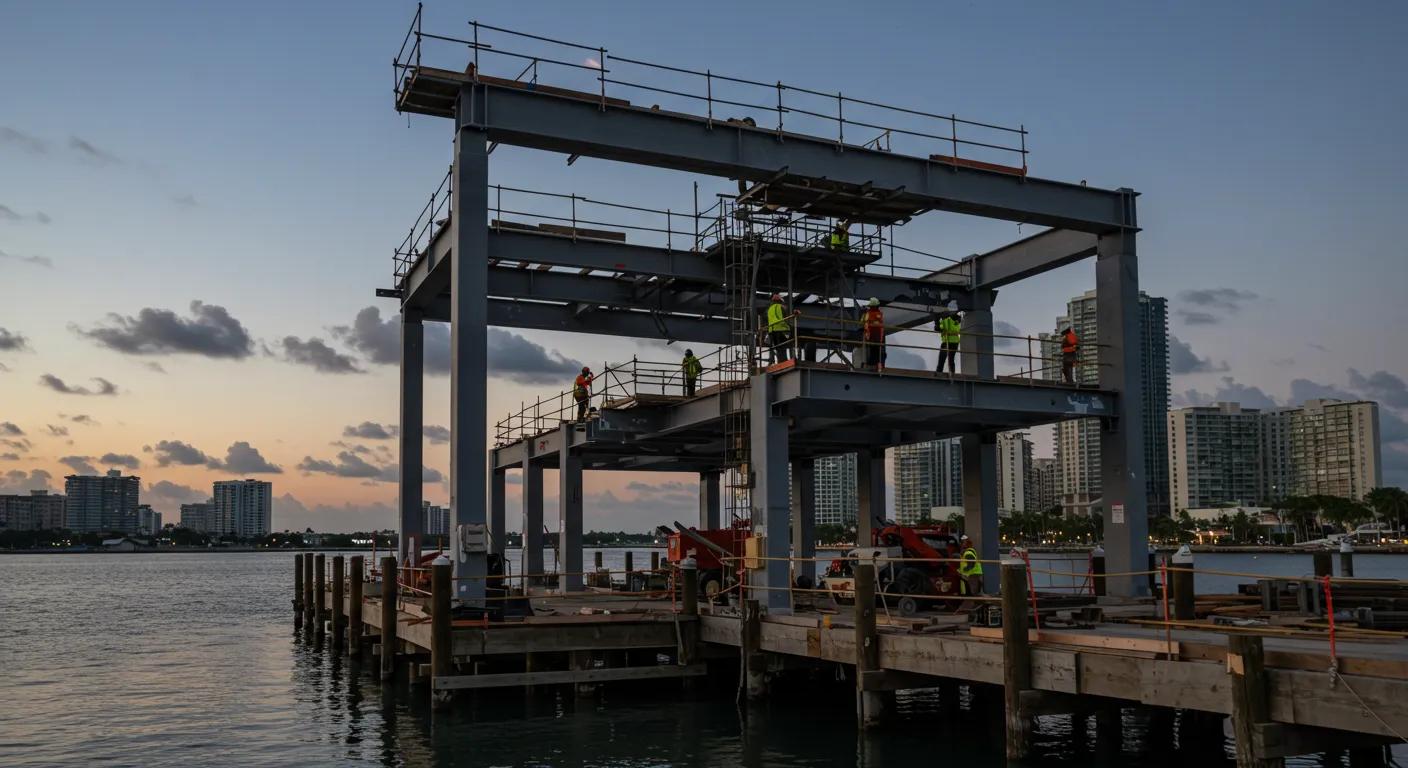Common Dock Construction Problems: Identifying Issues Before They Become Costly Delays
Constructing a dock is complex and involves many challenges. Understanding potential issues before they escalate into delays is key to saving time, money, and ensuring a safe, durable waterfront structure. This article outlines common challenges—from early identification of setbacks during planning to overcoming permitting issues and managing unforeseen site conditions. By following the strategies provided, you can protect your investment and build a dock that meets regulatory standards and functional requirements.
Let’s explore the critical issues and solutions to successfully manage your dock construction project.
Recognizing Frequent Dock Building Challenges Early
Early identification of challenges is essential to avoid unanticipated costs and delays. By being vigilant from the design stage, you can adjust plans and allocate resources to overcome potential problems.
What Are Typical Setbacks in the Dock Construction Process
Common issues in dock construction include environmental influences, poor planning, and unexpected ground conditions. Delays may occur due to unanticipated debris in the seabed, unstable soils, or miscommunications with contractors. Regulatory compliance and obtaining permits can further complicate projects. Conducting detailed site assessments, geotechnical studies, and environmental reviews can help identify these challenges early, preventing minor issues from escalating.
Identifying Potential Dock Construction Pitfalls Before Starting
Before construction begins, create a comprehensive checklist that examines local environmental conditions, water column characteristics, and potential sources of debris. For example, if your dock is in an area prone to plastic pollution or heavy sediment deposition, plan accordingly. Verify material transport routes and discuss permitting requirements with local agencies. This proactive approach also involves assessing the resilience of local ecosystems such as coral reefs or mangroves to support sustainable practices and preserve global biodiversity.
Early Detection of Issues to Prevent Expensive Project Delays
Regular site inspections by project managers or third-party experts help detect problems with supporting structures before they worsen. For instance, underestimated water depth fluctuations or tidal impacts may require design modifications to the dock’s load-bearing capacity. Using advanced tools to monitor soil stability and seawater quality (including pH and debris levels) allows you to adjust budgets and designs early, reducing the risk of expensive rework.
Understanding Common Construction Snags for Docks
Dock construction can suffer from errors such as improper material selection, miscalculated load requirements, and insufficient environmental consideration. Using materials that cannot withstand the corrosive effects of seawater or failing to account for the dock’s weight and usage patterns can cause early wear or safety hazards. A critical review of blueprints with input from maritime construction experts can help avert these issues before they affect the structure.
Proactive Steps for Spotting Dock Building Troubles
Develop a detailed inspection plan that includes advanced techniques such as sonar and ground-penetrating radar to assess the seabed. Regular contractor meetings and thorough documentation are essential. Additionally, setting aside a contingency budget for unforeseen issues such as microplastics in the water or unidentified submerged obstructions ensures continuous monitoring and communication among all stakeholders. This proactive approach minimizes repair downtime and supports regulatory compliance.
Overcoming Permitting and Regulatory Obstacles in Dock Projects
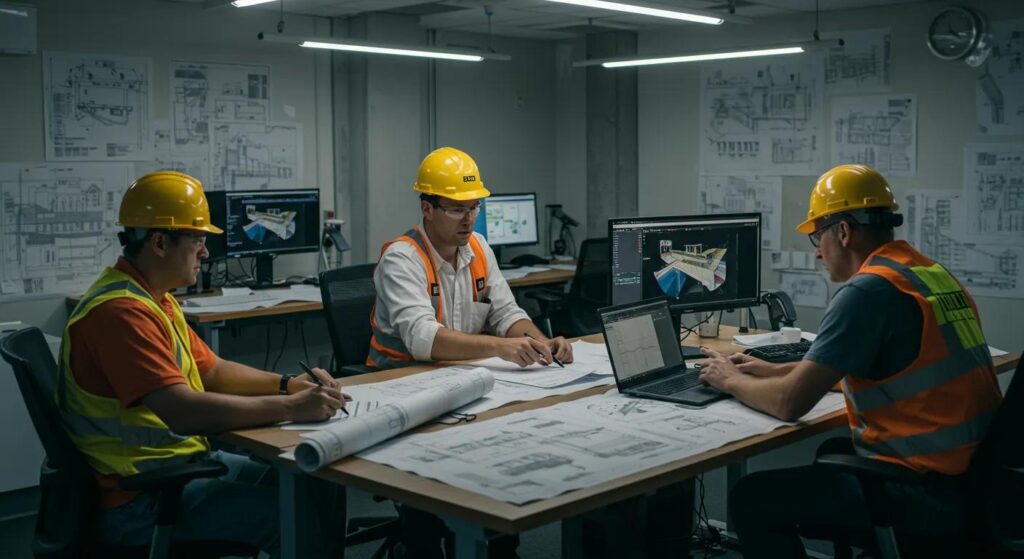
The permitting process can be as challenging as the construction itself. Clear communication with regulatory bodies and understanding local zoning and environmental standards are critical to project success.
Securing Necessary Permits to Avoid Dock Project Stoppages
Obtaining all required permits before construction begins is crucial. Coastal areas often require permits related to waterway usage, environmental protection, and zoning. Engaging early with authorities, especially if your dock is near sensitive ecosystems or in marine protected areas, prevents delays. Experienced consultants who specialize in waterfront construction can simplify permit applications and help maintain meticulous records for inspections.
Understanding Local Zoning Ordinances for Dock Construction
Local zoning rules, which may include setbacks, size limitations, and material restrictions, have a significant impact on dock design. By studying ordinances and consulting with local planning departments, you can design a dock that meets all requirements without costly redesigns later. Zoning may also influence the dock’s aesthetics, hence the choice of decorative steel or treated wood.
Addressing Environmental Regulations Impacting Dock Builds
Increasing environmental regulations require dock projects to consider climate change, marine pollution, and biodiversity loss. You may need to integrate sustainable practices, such as using recycled materials or designing to minimize disruption to natural water flow. Collaborate with environmental experts to conduct impact assessments that identify risks like sea level rise or disturbances to the food chain, ensuring that safeguards are established early in the project.
Consequences of Non-Compliance With Dock Building Codes
Failure to adhere to local building and environmental codes can result in halted construction, fines, or legal action. Non-compliance increases liability in events of accidents or structural failures. Strictly following a compliance checklist and obtaining all necessary permits will reduce risks and foster a better relationship with regulatory authorities.
Strategies for Streamlining the Dock Permitting Process
Streamline the permitting process by engaging early with local, state, and federal agencies. Pre-application meetings, hiring a dedicated permit coordinator, and thorough documentation—including blueprints, impact reports, and safety plans—can expedite the process. Digital tracking systems also help monitor submissions and deadlines, reducing the chance of unexpected project stoppages.
Addressing Unforeseen Site Condition Complications
Despite thorough planning, unforeseen site conditions such as unstable soils, fluctuating water depths, or hidden obstructions may arise. Addressing these issues early is vital to avoid costly modifications later.
Dealing With Unstable Soil or Seabed Conditions
Unstable soils or inconsistent seabed conditions can cause the dock to shift, tilt, or collapse. Rigorous geotechnical analysis, including soil sampling and testing, is necessary to determine bearing capacity and identify detrimental materials. Reinforcement strategies such as piling, geogrids, or deep foundations can rectify issues identified early by geotechnical engineers, thereby ensuring a stable base for construction.
Managing Water Depth Fluctuations and Tidal Impacts
Tidal fluctuations and varying water depths affect dock stability and functionality. Analyzing historical tidal data and utilizing sonar mapping and tidal gauges can aid in designing a structure that adapts to these variations. Use corrosion-resistant materials like treated steel or marine-grade composites, and consider adjustable design elements to accommodate prolonged tidal changes.
Identifying Submerged Obstructions Before Construction
Submerged obstructions—such as rocks, construction debris, or discarded materials—can delay installation if undetected. Advanced survey methods, including side-scan sonar and underwater visual inspections, can reveal such hazards, allowing for removal or design adjustments. This preparatory work minimizes risks and ensures the project stays on schedule.
Adapting Plans for Unexpected Ground Challenges
Unexpected ground conditions, whether due to archaeological finds or unanticipated soil variations, may necessitate immediate changes in design. Pausing construction to consult with engineers and environmental specialists ensures that the design remains viable. Adjustments may include additional reinforcement or repositioning the dock to more stable ground. Effective communication among the design team, contractors, and inspectors is essential to resolving these challenges swiftly.
How Site Assessments Prevent Costly Dock Construction Surprises
Comprehensive site assessments—including topographical surveys, historical data analysis, geotechnical testing, and environmental impact studies—provide an accurate picture of the site conditions. These studies help forecast potential complications, serve as a basis for selecting the optimal dock design, and support permit applications. With reliable data, you can budget for contingencies and align your construction timeline with actual site conditions, significantly reducing the risk of cost overruns and delays.
Mitigating Design and Engineering Flaws in Dock Plans
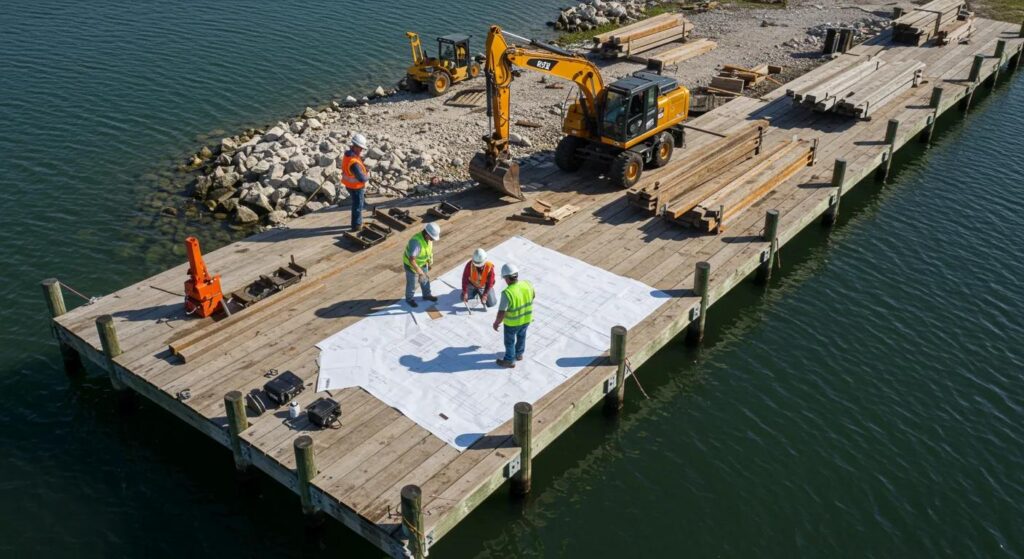
A robust design is essential to a successful dock construction project. Even minor design or engineering flaws can shorten a dock’s lifespan and compromise safety.
Consequences of Poor Dock Design on Longevity and Safety
Inadequate design can lead to accelerated deterioration, structural failures, and higher repair costs. If blueprints do not accurately calculate load-bearing needs or account for tidal forces and heavy usage, damage may occur much sooner than expected. Robust design plans and stress testing during the planning phase are crucial to ensure long-term durability and user safety.
Ensuring Structural Integrity in Dock Engineering
Achieving structural integrity requires a balance of thoughtful design, quality materials, and sound construction techniques. Experienced civil and marine engineers ensure that load distribution, support systems, and connection stability are adequately addressed. Modern practices often include redundant supports to mitigate catastrophic failure. High-quality materials like marine-grade steel and specialized composites work together to create a secure, long-lasting dock.
Addressing Inadequate Load Bearing Capacity in Designs
Underestimating the load a dock must bear can result in excessive stress and eventual failure. It is essential to consider both static and dynamic forces when calculating load-bearing capacity. Consulting with structural experts and using computer simulations to build in a safety margin ensures that the dock can handle unexpected loads without compromising its integrity.
How Design Oversights Lead to Costly Rework
Overlooking critical design details may force rework during construction, leading to demolition of partially completed structures and significant financial loss. Regular design review meetings, third-party audits, and iterative testing of components help catch errors early and avoid costly disruptions later in the construction process.
Reviewing Dock Blueprints for Potential Flaws
A rigorous review of dock blueprints is integral to project management. This review involves cross-checking design documents with local construction standards, consulting independent experts, and using standardized checklists. Regular blueprint reviews, especially after design modifications, ensure that every change is properly documented and integrated, making the overall construction process more efficient and robust.
Managing Material Selection and Supply Chain Disruptions
The choice of materials and the reliability of your supply chain play a crucial role in the quality and timeline of dock construction. Selecting durable materials suited to the marine environment and maintaining a stable supply chain are both essential.
Choosing Appropriate Materials for Dock Durability and Environment
Materials such as marine-grade steel, reinforced concrete, and treated wood are commonly used because they can withstand corrosion, saltwater exposure, and biofouling. Evaluate environmental factors—including sea water corrosion, temperature fluctuations, and sediment deposition—to choose materials that support both durability and sustainability. Detailed testing and comparison of material properties ensure that your dock remains structurally sound and environmentally responsible.
Impact of Material Shortages on Dock Project Timelines
Global supply chain disruptions, price fluctuations, or regional demand surges can delay critical material deliveries. For example, delays in obtaining high-grade steel or composite panels may extend project deadlines and increase labor costs. Establishing a contingency plan that includes alternate suppliers, bulk purchasing agreements, and scheduling flexibility helps mitigate these risks.
Sourcing Quality Dock Components to Prevent Premature Failure
Using high-quality components is key to preventing premature failure. When evaluating suppliers, consider their certifications, project experience, and quality control measures. Ensure that fasteners, structural supports, and other critical components are specifically rated for marine use. Prioritizing quality reduces long-term maintenance costs and enhances the dock’s durability against environmental stresses.
Handling Rising Material Costs During Dock Construction
Rising material costs, driven by factors like inflation or increased demand, can challenge project budgets. To manage these costs, develop a flexible budget with a contingency fund and consider locking in prices with suppliers through fixed contracts or bulk purchases. Evaluating alternative materials that provide similar performance at a lower cost may also prove beneficial.
Alternatives When Specified Dock Materials Are Unavailable
When preferred materials are in short supply, viable alternatives that provide the same durability and performance can keep your project on schedule. Conduct comparative analyses that review performance, environmental impact, and cost before substituting materials. Document these alternatives and communicate any changes to all team members to ensure continued compliance with safety standards.
Below is a table summarizing key material selection criteria:
| Material Type | Durability | Resistance to Corrosion | Cost Consideration | Typical Use in Docks |
|---|---|---|---|---|
| Marine-Grade Steel | High | Excellent | High | Structural frameworks and supports |
| Treated Wood | Moderate | Good | Moderate | Decking and aesthetic features |
| Reinforced Concrete | Very High | Moderate | Moderate | Piling and heavy load-bearing areas |
| Composite Materials | High | High | Variable | Alternative structural components |
| Fiber-Reinforced Polymers | High | Excellent | High | Specialized marine applications |
The table shows that strategic selection based on durability, corrosion resistance, and cost is essential for a sustainable dock project.
Effectively Handling Contractor and Labor Issues for Smooth Construction
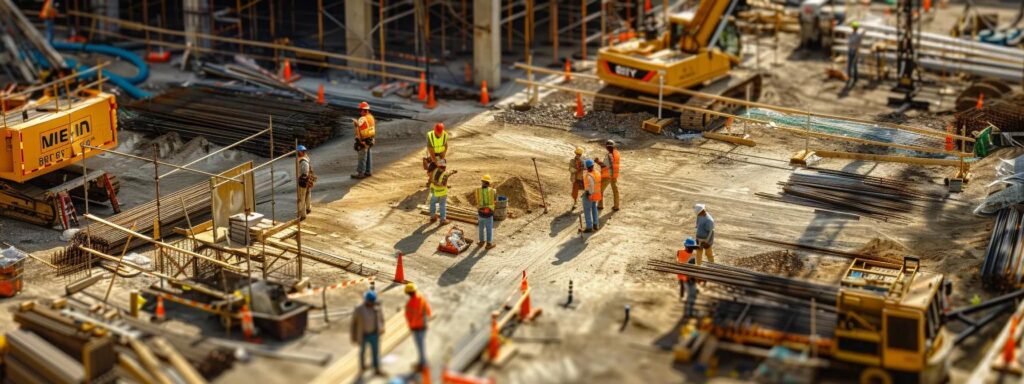
Contractor and labor issues can have a substantial impact on timelines and overall project quality. Effective management of these issues is achieved through clear communication, well-defined contracts, and proactive planning.
Selecting Qualified and Experienced Dock Builders
Choosing contractors with a proven track record in marine construction is critical. Qualified builders are familiar with local environmental conditions, corrosion challenges, and current dock engineering innovations. Look for reputable companies with solid references, certifications, and portfolios that demonstrate adherence to industry standards. This reduces risks related to delays and labor disputes.
Addressing Miscommunication With Your Construction Team
Regular communication is vital to avoid installation mistakes and misinterpretations. Schedule frequent meetings, require detailed progress reports, and use comprehensive project management software. Clear contractual guidelines and documentation help ensure everyone is on the same page and prevent misunderstandings throughout the construction process.
Dealing With Unreliable Contractors or Subcontractors
Unreliable contractors can derail a project through missed deadlines or substandard work. Perform thorough background checks and reference verifications before hiring. Include performance-based clauses in contracts to enforce deadlines and quality standards. If problems arise, address them promptly with documented correspondence and consider having a contingency contractor ready to step in if needed.
Impact of Labor Shortages on Dock Project Schedules
Labor shortages can significantly delay project milestones. To mitigate this, develop scalable labor plans that might include temporary staffing agencies and multiple labor providers. Monitor regional labor forecasts and maintain scheduling flexibility to adjust quickly to workforce changes.
Ensuring Clear Contracts to Prevent Disputes and Delays
Well-drafted contracts that outline timelines, deliverables, payment milestones, and dispute resolution measures are essential. Document all terms clearly so that all parties are accountable, and enforce penalties if performance issues occur. A solid contractual framework helps keep the project on track while providing a reference for resolving disputes.
Frequently Asked Questions
Q: What steps can I take to identify construction setbacks before starting? A: Begin with comprehensive site assessments—including geotechnical and environmental studies—to evaluate soil stability, water depth fluctuations, and potential debris. Early reviews of blueprints and expert consultations can prevent costly rework later.
Q: How can I streamline the dock permitting process? A: Engage early with regulatory agencies to secure all necessary permits before starting construction. Hiring a permit specialist, keeping detailed documentation, and scheduling pre-application meetings can simplify the process.
Q: What materials are best suited for dock construction in harsh marine environments? A: Marine-grade steel, treated wood, reinforced concrete, and composite materials are ideal due to their resistance to corrosion and tidal fluctuations. Careful material selection based on durability and exposure is essential.
Q: How do I handle unexpected site condition complications during construction? A: Regular site inspections and advanced survey techniques such as sonar mapping help identify issues early. If challenges like unstable soil or submerged obstructions arise, consult professional engineers immediately for design adaptations.
Q: What strategies ensure clear communication with my construction team? A: Establish regular meetings, use detailed project management software, and maintain comprehensive documentation. Clear contracts with defined roles and performance benchmarks prevent miscommunication.
Q: How do labor shortages impact dock construction, and what can be done about it? A: Labor shortages can delay project milestones. Mitigate these impacts by securing agreements with temporary staffing agencies, maintaining schedule flexibility, and incorporating proactive workforce planning.
Q: Can alternative materials be used if the specified ones become unavailable? A: Yes, alternatives meeting the required durability and performance standards can be used. Conduct comparative analyses of performance, environmental impact, and cost before making substitutions.
Final Thoughts
This guide has reviewed key challenges in dock construction—from early detection of potential setbacks to navigating permitting hurdles, managing unforeseen site conditions, addressing design flaws, and handling contractor and labor issues. Implementing proactive measures, engaging experienced experts, and maintaining clear communication at every stage will ensure a smooth project flow and safeguard your investment. Following these strategies will help you build a dock that is structurally sound and resilient against environmental and logistical challenges, paving the way for long-term success.

